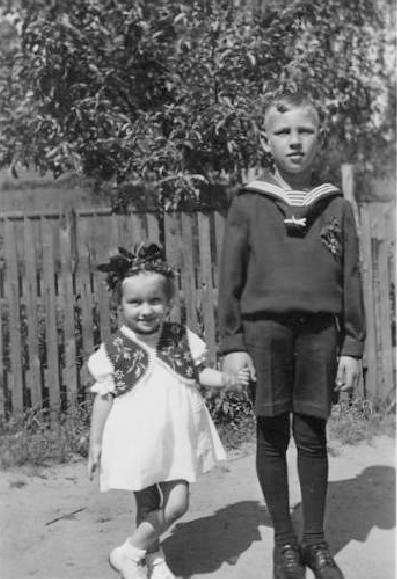
Figure 1.--This Germany boy in the 1930s wear black long stockings with his sailor suit. Most children at the time wore stockings with a plain for flat weave. Ribbed stockings were also worn, but were less common. |

|
An important aspect of weaving is the type. We notice various weaves. The two most important weaves associated with hosiery are plain or flat weaves and ribbed weaves. Flat weaves seem by far the most common. It also appears to be the only type of hosiery weave for many centuries. We also see a good deal of ribbed hosiery, including long stockings, knee socks and annkle socks. We are not sure just when ribbed stockings first appeared. We first note them in the mid-19th century, due to the accurate photographic images. We are not yet sure that is when they first appeared. Notably the mid-19th century is when major innovations in manufacturing methods began. There are other more fashion based weaves such as cable-knit weaves which have been proven popular for kneesocks. Here for reasons we do not fully understand, the weaves used for the various types of hosiery varied. We do not, for example, see cable knit long stockings while this was a popular weave for kneesocks. Nor do we see very commonly long stockings with fancy patterns while this was also common for kneesocks.
The two most important weaves associated with hosiery are plain or flat weaves and ribbed weaves. Flat weaves seem by far the most common. It also appears to be the only type of hosiery weave for many centuries. We note ribbed weaves for the first time in the 19th century. We think this has to do with technical advances in weaving machiery during the late-19th century. One problem in assessing the photographic record is that some hosiery had fine ribbing that does not show up in the photograph.
We also see a good deal of ribbed hosiery, including long stockings, knee socks and annkle socks. We are not sure just when ribbed stockings first appeared. We first note them in the mid-19th century, due to the accurate photographic images. We are not yet sure that is when they first appeared. Notably the mid-19th century is when major innovations in manufacturing methods began. Areader writes, "One general point which we have made before but that may need repeating
here is that in the 1910s and later almost all long stockings were ribbed. The flat-weave look, however, just meant that the ribbing was too small to see and gave the appearance of smoothness. All stockings were really ribbed (although mostly finely ribbed) because of the desired elasticity and closeness of fit."
There are other more fashion based weaves such as cable-knit weaves which have been proven popular for kneesocks. Here for reasons we do not fully understand, the weaves used for the various types of hosiery varied. We do not, for example, see cable knit long stockings while this was a popular weave for kneesocks.
We see some hosiery knit with fancy patterns. Here we see both mukti-colored weaves and single colored weaves in a fashionable pattern. We do not commonly see long stockings with fancy color patterns other than horizontal colored bands. while kneesocks were commonly done in elaborate patterns.
Navigate the Historic Boys' Clothing Web Site:
[Return to the Main hosiery weave page]
[Return to the Main hosiery page]
[Introduction]
[Activities]
[Biographies]
[Chronologies]
[Countries]
[Style Index]
[Bibliographies]
[Contributions]
[FAQs]
[Glossaries]
[Satellite sites]
[Tools]
[Boys' Clothing Home]
Navigate the Historic Boys' Clothing Web chronological pages:
[Early 18th century]
[The 1800s]
[The 1830s]
[The 1850s]
[The 1860s]
[The 1870s]
[The 1880s]
[The 1890s]
[The 1900s]
[The 1910s]
[The 1920s]
[The 1930s]
[The 1940s]
Navigate the Historic Boys' Clothing Web style pages:
[Knee pants]
[Knickers]
[Short pants suits]
[Kilts]
[Sailor suits]
[Shoes]
[Ring bearer/page costumes]
[Shortalls]
